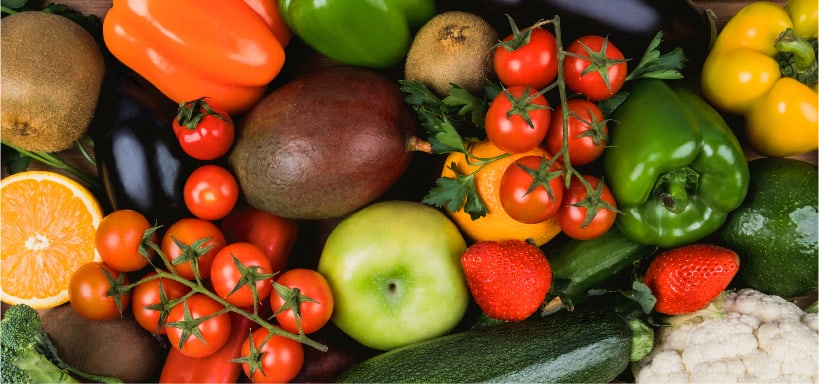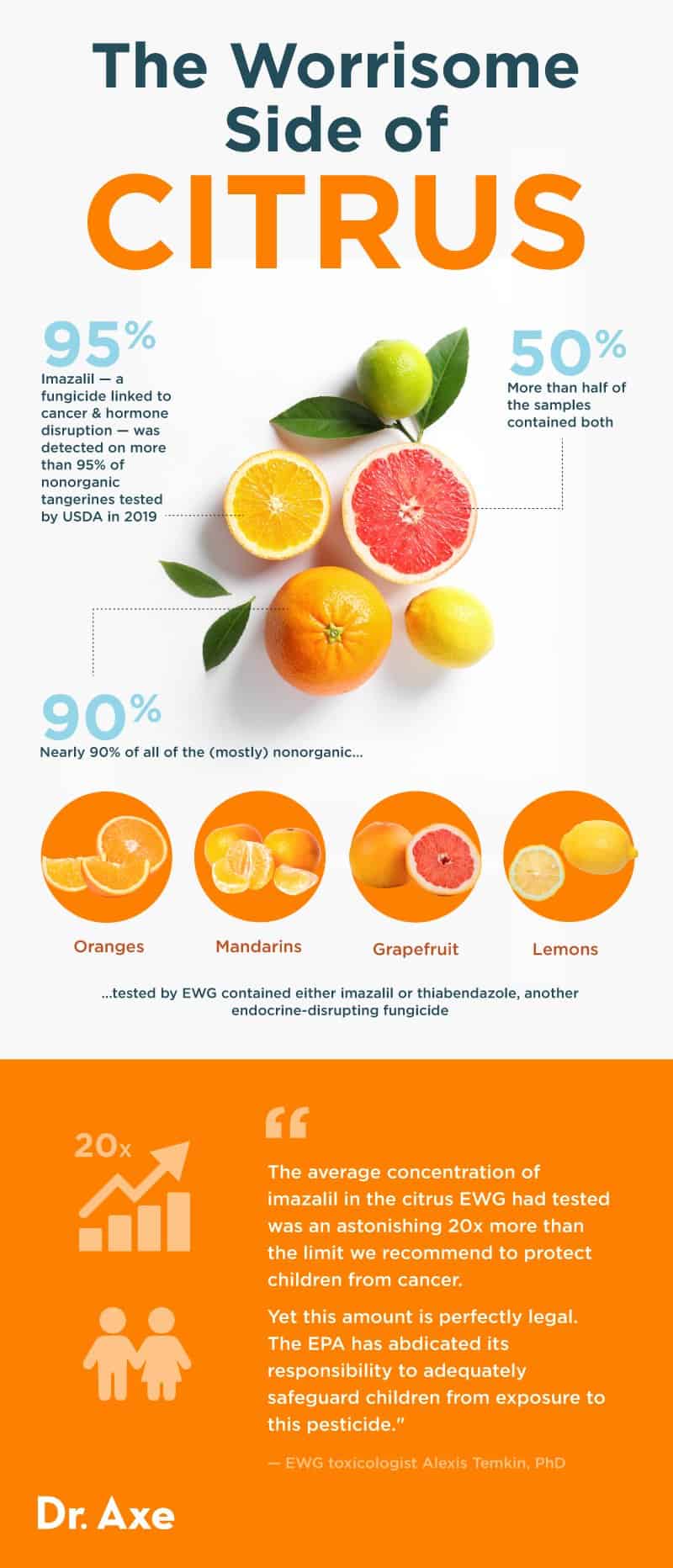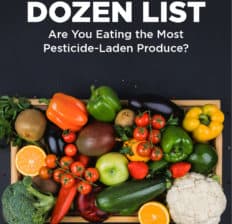This Dr. Axe content is medically reviewed or fact checked to ensure factually accurate information.
With strict editorial sourcing guidelines, we only link to academic research institutions, reputable media sites and, when research is available, medically peer-reviewed studies. Note that the numbers in parentheses (1, 2, etc.) are clickable links to these studies.
The information in our articles is NOT intended to replace a one-on-one relationship with a qualified health care professional and is not intended as medical advice.
This article is based on scientific evidence, written by experts and fact checked by our trained editorial staff. Note that the numbers in parentheses (1, 2, etc.) are clickable links to medically peer-reviewed studies.
Our team includes licensed nutritionists and dietitians, certified health education specialists, as well as certified strength and conditioning specialists, personal trainers and corrective exercise specialists. Our team aims to be not only thorough with its research, but also objective and unbiased.
The information in our articles is NOT intended to replace a one-on-one relationship with a qualified health care professional and is not intended as medical advice.
Dirty Dozen List: Are You Eating the Most Pesticide-Laden Produce? (Plus the Clean 15)
March 28, 2024

The Environmental Working Group (EWG) released its 2024 Dirty Dozen list, a “Shopper’s Guide to Pesticides in Produce,” and it serves as a solid reminder that we still have a lot of work to do when it comes to cleaning up the food system. This year, the report found that nearly 75 percent of non-organic samples tested positive for at least one pesticide.
And get this: Kale, collard greens and mustard greens, along with hot peppers and bell peppers, had 101–103 pesticides.
In addition, blueberries and green beans, which were added to the list last year, remain, and alarmingly, green bean samples displayed residue of acephate, a toxic pesticide that was banned from use on green beans grown for food by the Environmental Protection Agency (EPA) more than a decade ago.
Thankfully, EWG’s report also features a “Clean 15” list, which identifies the non-organic produce least likely to be contaminated with pesticide levels. It’s best to choose and grow organic as often as possible, but if you’re on a budget or your selection is limited, these lists help you focus your attention on avoiding the most contaminated fruits and veggies — because one thing is clear: Most of us need more vegetables and fruits in our diets.
Key Findings of the Report
- The 2024 guide comes from data from 47,510 samples of 46 fruits and vegetables, with the U.S. Department of Agriculture (USDA) and Food and Drug Administration (FDA) washing and testing the samples.
- The USDA and FDA found traces of 254 separate pesticides.
- Some of these pesticides have been banned by the EPA for a long, long time.
- Across all 12 Dirty Dozen items, 95 percent of samples had pesticides.
- 6 percent of green beans sampled were found to have organophosphate insecticides, which can harm the central nervous system.
- The vast majority (more than 90 percent) of strawberries, apples, cherries, spinach, nectarines and grapes tested positive for two more pesticides.
- There were 209 total pesticides found on Dirty Dozen produce.
- More than 50 of those pesticides were found on 11 of the Dirty Dozen crops — excluding cherries.
- Every Dirty Dozen list food had at least 13 pesticides detected and up to 23.
- As noted, kale, collard greens and mustard greens, along with some peppers, had the most pesticides.
- Prohibited from use on green beans since 2011, 6 percent of green bean samples tested positive for the neurotoxic organophosphate insecticide acephate.
- Nearly 65 percent of the Clean 15 list samples had no detectable pesticides.
- Less than 2 percent of avocado and sweet corn samples detected pesticides, making them the cleanest produce.
- Slightly more than 10 percent of the Clean 15 samples had two or more pesticides.
- No sample from the first six Clean 15 items tested positive for more than three pesticides.
The Dirty Dozen List and Clean 15 List
EWG’s Dirty Dozen
- Strawberries
- Spinach
- Kale, collard and mustard greens
- Grapes
- Peaches
- Pears
- Nectarines
- Apples
- Bell and hot peppers
- Cherries
- Blueberries
- Green beans
EWG’s Clean 15
The Clean 15 list includes produce that is least likely to be contaminated by pesticides.
Here’s the Clean 15 List:
- Avocados
- Sweet corn
- Pineapple
- Onions
- Papaya
- Sweet peas (frozen)
- Asparagus
- Honeydew melon
- Kiwi
- Cabbage
- Watermelon
- Mushrooms
- Mangoes
- Sweet Potatoes
- Carrots
Fungicides in the Dirty Dozen
Of the most prevalent pesticides found on the Dirty Dozen this year, four of the top five are fungicides:
- fludioxonil
- pyraclostrobin
- boscalid
- pyrimethanil
These may pose risks to humans, particularly to hormonal balance.
Fludioxonil was found in 90 percent of peaches and nearly 30 percent of Dirty Dozen samples. This is problematic because this fungicide is linked to breast cancer since it acts like estrogen. It also can have harmful effects to male reproduction.
Pyrimethanil was found on 54 percent of pears sampled. This fungicide has been found to potentially block androgen receptors and lead to thyroid disruptions.
There is animal research that shows pyraclostrobin may be associated with liver toxicity in and metabolic disorders. It was found on at least 10 percent of each produce item on the Dirty Dozen, with cherries and strawberries having this fungicide in about half of samples.
Boscalid was detected in more than half of cherries and strawberries and almost half of blueberries. This chemical has been linked to cancer, thyroid issues and hormone disruptions in animal studies.
The Worrisome Side of Citrus
EWG also has raised red flags when it comes to non-organic citrus over the years, even though citrus didn’t land on the Dirty Dozen list. The organization found that almost 90% of citrus samples analyzed in 2020 tested positive for imazalil, a fungicide that can interfere with hormone levels. The EPA dubbed this fungicide a “likely human carcinogen.”
USDA’s own 2019 testing looking at tangerines found more than 95% tested positive for imazalil, too.
This underscores the fact that we need to be concerned about not just the number of different pesticides on and in our food — but the potency and danger level of the chemicals, too.
EWG also performed independent pesticide testing on citrus fruits and found imazalil, a fungicide linked to cancer and hormone disruption, in nearly 90 percent of samples. It’s important to note that the chemical was detected on peeled oranges and found at levels almost 20 times higher than EWG’s recommended limit to protect children’s health.

Watch Out for Adulterated Raisins
Generally, EWG focuses on test results from USDA’s fresh produce testing, but back in 2020, EWG included the dried fruit in its rankings.
What the organization found is startling and all the more reason to reach for organic when you’re shopping for raisins. Raisins scored worse than strawberries, nectarines, apples and cherries. In fact, 99 precent of raisins contained at least two pesticides, according to the 2020 version of the report.
Interestingly, pesticides were even found on organic raisins, prompting researchers to note that prunes tend to have lower pesticide residues than both conventional and organic raisins.
Dirty Dozen Food Chemicals
In addition to the Dirty Dozen produce list, EWG also unveiled its “Dirty Dozen Guide to Food Chemicals: The top 12 to avoid” list. As the EWG report explains:
Almost 99 percent of food chemicals introduced since 2000 were greenlighted for use by food and chemical companies, rather than properly reviewed by the Food and Drug Administration. Many of these widely used chemicals are associated with major health harms, including increased risk of cancer, developmental harm and hormone disruption.
These substances end up in what we eat, thanks to a legal loophole that allows foods to be classified as “generally recognized as safe.” It’s a loophole food and chemical companies have exploited for decades – it means that instead of the FDA determining which food chemicals are safe to consume, the manufacturers of those substances decide.
Here are the top 12 food chemicals EWG recommends avoiding:
- Potassium bromate
- Propyl paraben
- Butylated hydroxyanisole (BHA)
- Butylated hydroxytoluene (BHT)
- Tert-butylhydroquinone (TBHQ)
- Titanium dioxide
- Brominated vegetable oil (BVO)
- Artificial colors
- Artificial sweeteners
- Azodicarbonamide (ADA)
- Propyl gallate
- Sodium benzoate
Others to be concerned about include nitrates, nitrites, forever chemicals (PFAS) and heavy metals.
“Despite the abundance of science linking exposure to pesticides with serious health issues, a potentially toxic cocktail of concerning chemicals continues to taint many of the non-organic fruits and vegetables eaten by consumers,” said Alexis Temkin, Ph.D., EWG toxicologist.
“Everyone – adults and kids – should eat more fruits and vegetables, whether organic or not,“ Temkin said. “A produce-rich diet provides many health benefits.
“But in the ongoing absence of meaningful federal oversight, consumers concerned about pesticide exposure can use EWG’s Shopper’s Guide to Pesticides in Produce to navigate the produce aisle in ways that work best for them and their families.”
Meanwhile, Consumer Reports did its own analysis of plastic chemicals hiding in food and found some disturbing results. Testing at 85 foods — including prepared meals, fruits and vegetables, dairy products, baby food, fast food, meat and seafood — Consumer Reports found “notably lower” levels of BPA than its testing from 2009, though 79 percent of samples tested did have BPA and other bisphenols present.
Unfortunately, the news was far worse on phthalates. They were present in every food except one tested, and there were much higher levels of phthalates than bisphenols.
This is troubling because, as Consumer Reports noted, “one of the most well-studied phthalates is called DEHP. Studies have linked it to insulin resistance, high blood pressure, reproductive issues, early menopause, and other concerns at levels well below the limits set by American and European regulators. It was the most common phthalate that we found in our tests, with more than half of the products we tested having levels above what research has linked to health problems.”
The toxic plastic chemicals were found in many sugar-laden beverages, canned beans, condiments, dairy products, fast food items, grains, infant food, meat and poultry, packed fruits and vegetables, prepared meals, and seafood.












